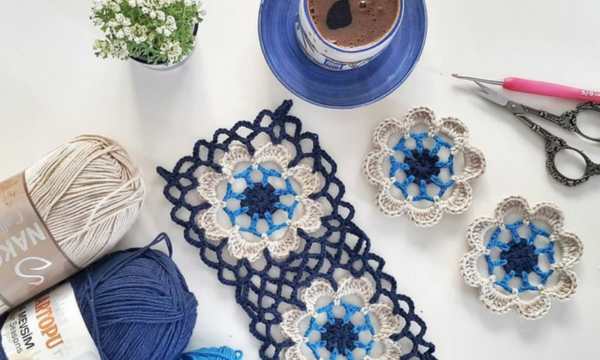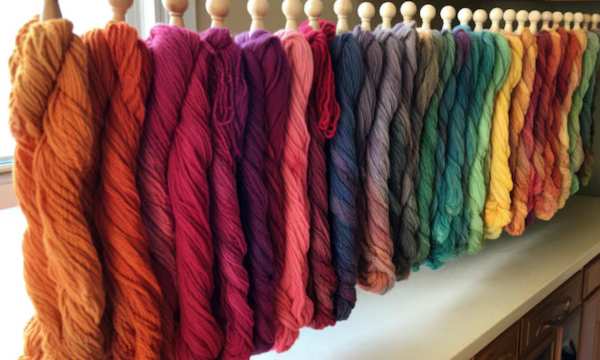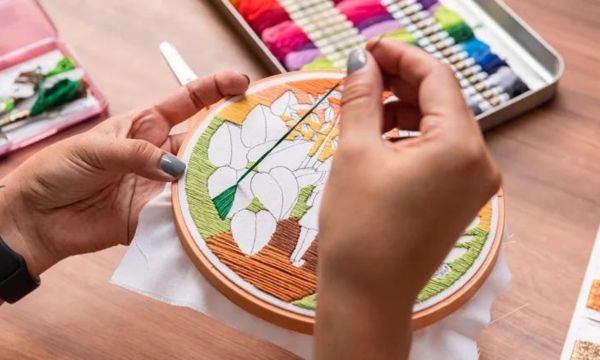Embroidery is an age-old craft with a long history. Over time, it has transformed from intricate designs sewn by hand to modern technology using machines.
Ad
Finding the right needle is one of the most important parts of embroidery. The purpose is very important to the success of your embroidery project because it affects the quality of the stitches, the tension of the thread, and the overall result of the work. This complete guide delves into the world of embroidery needles, learning about the different types of embroidery needles, what they are made of, and how to choose the right one for your project.
1. Understanding the Anatomy of an Embroidery Needle
What is an embroidery needle? Before we discuss how to choose the right needle, let’s first take a look at what it looks like. Embroidery needles mainly consist of three parts:
Ad
- Shaft: The elongated part of the needle is called the needle shaft. Depending on the type of needle, it can be straight or slightly curved.
- Eye of the Needle: The thread is passed through the eye of the needle, a small hole near the point.
- Tip: The point where the needle passes through the fabric.
Depending on the type of needle and its purpose, these parts may come in different sizes and shapes.
2. Different Types of Embroidery Needles
There are many types of embroidery needles, each made for a different task or fabric. Here are some common types of embroidery needles:
Ad
- Crewel Needles: There are many types of needles, but crewel needles have a longer eye and a sharp point, so they can be used for both crewel and flat embroidery.
- Tapestry Needles: These needles are ideal for machine embroidery and embroidery on solid fabrics because of their blunt points and large eyes.
- Chenille Needles: These needles have a large eye and a sharp point, making them ideal for embroidering with heavy thread or ribbon.
- Embroidery needles (sharp): These needles have a thin body and a sharp point. They are suitable for general embroidery on light to medium-weight fabrics.
- Ballpoint Needles: Because ballpoint needles have rounded points, they are ideal for knit and stretch fabrics, as they can slide between the fibers without getting stuck.
- Milliners Needles: The eye of this needle is long and narrow and the point is sharp. It is also called grass needles. They are often used to make hats and embroider gold bar buttons.
- Quilting needles: These needles are shorter and thicker than regular embroidery needles. They are designed for sewing multiple layers of fabric in quilting projects.
- Metalworking Needles: These needles are made specifically for metalworking embroidery. They have a longer, thinner body that allows for easier precision machining with metal wire.
3. Choose the Best Needle for Your Project
Choosing the right needle is important if you want your embroidery project to be successful. When choosing the right needle, there are a few things to consider:
- Fabric Type: Different types of fabric require different needles. For lightweight fabrics such as organza or silk, choose a thin, sharp needle. If you are sewing heavier fabrics, such as denim or canvas, choose a needle with a sturdier shaft.
- Type and thickness of wire: Think about the type of wire you will use and the thickness of the wire. A sharp needle is suitable for fine thread, but thicker thread may require a needle with a larger eye.
- Embroidery technique: Which needle you choose may depend on the embroidery technique you use. For example, crewel embroidery may require a crewel needle, while a tapestry needle may be better suited to a counting thread technique.
- Needle size: Needles come in different sizes, from very thin to very thick. Choose a needle size that suits your fabric and thread to ensure a smooth stitch without damaging anything.
- Personal comfort: The needle you choose should also suit your comfort and preferences. Some embroiderers prefer to use a certain type of needle depending on their experience and comfort level.
4. Tips for Needle Maintenance
Once you have chosen the right needle, make sure it is long-lasting and effective. Here are some ways to care for your needles:
- Keep the needle clean: Wipe the needle regularly to remove lint and built-up dust fibers. A simple wipe with a dry, clean cloth can make a big difference in how well your needle works.
- Needle box: To keep your needles safe and organized, purchase a needle box or storage box. This prevents accidental puncture wounds and also ensures that the needle remains sharp.
- Replace the needles regularly: Over time, needles wear out, especially if you use them often. To ensure clean, accurate stitches, replace your needle regularly.
- Choose good needles: Spend your money on good needles from well-known brands. Although they cost a little more, the performance and durability they offer make them well worth the money.
- How to store needles: To prevent needles from going unused, store them in a cool, dry place. You may want to use a needle storage container with separate sections for different sizes and types of needles.

Conclusion
The needle is more than just a tool in the embroidery world; It is an important part of creating beautiful, intricate designs. Understanding the different types of embroidery needles and choosing the right one for your project is a skill that can improve your embroidery experience. No matter how experienced you are, the right needle can make a big difference in the outcome of your embroidery project. Take the time to explore all the options and try different needles until you find the right needle for your embroidery project.
FAQs
1. Why is it important to choose the right embroidery needle?
Choosing the right embroidery needle is very important as it directly affects the outcome of your project. Needle type, size, and quality affect success rate, stitch quality, and thread tension.
2. What are the main parts of an embroidery needle?
An embroidery needle consists of three main parts: the long, slender shaft, the eye (the small hole near the point used for threading thread), and the point (the point used for cutting fabric).
3. How do I choose the right needle for my fabric?
Take the weight and type of fabric into account. Silk may require a thin, sharp needle, while heavier denim may require a stronger needle. To ensure a smooth stitch without damaging the fabric, the needle must be the correct size.
4. What type of thread and how thick is the thread important when choosing a needle?
Yes, the type of wire and its thickness matter. A sharp needle is suitable for fine thread, but thicker thread may require a needle with a larger eye. You get the best performance when the needle matches the thread.
5. Are there different needles for different types of embroidery?
Yes, different needles are suitable for different types of embroidery. For example, crewel embroidery can be done with crewel needles, and counting thread techniques can be done with tapestry needles. Consider technique when picking needles.
6. How do you keep embroidery needles in good condition?
Wipe the needle regularly to remove lint and dust residue and keep it clean. Nuts should be stored safely in a pencil case or storage box. To keep the needles sharp, you will need to replace them regularly, and if you want them to last a long time, you may want to buy good needles.


